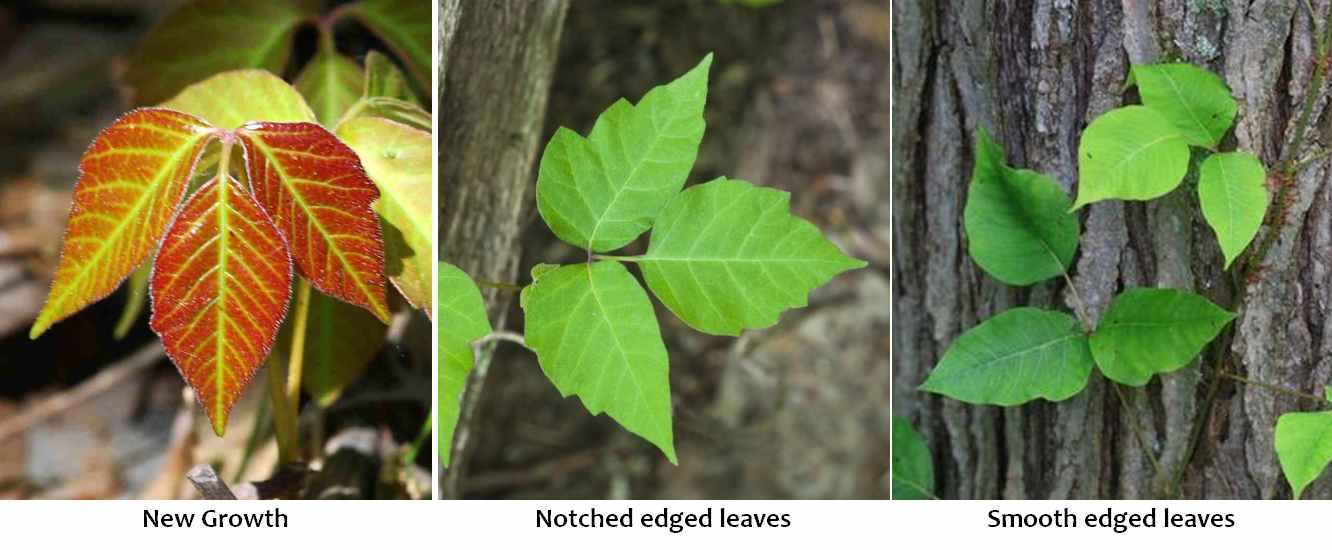What better way to avoid your enemy than to know it well?
Poison Ivy is an attractive plant. A similar looking plant without the nasty side-effects would most likely be a very popular ground cover. The appearance will change throughout the season and from plant to plant.
We’ve been taught to look for a plant with three shiny leaves and notched edges. Sometimes, it doesn’t quite look like that.
New growth – both spring and summer – is very shiny and reddish in color. As the leaves mature, they turn green. While they are often shiny, that isn’t always the case either. If there’s a drought or even if there’s a lot of dust or pollen in the air, it could stick to the oils on the leaves to make them look dull. Finally, not all leaves have notches. Some are smooth-edged.
Poison Ivy is ALWAYS “poison.” It doesn’t matter if it’s new growth or old, alive or dead – even dead for YEARS, the oil doesn’t break down. Spraying it with weed killer will stop it from spreading (sometimes) but will also make it harder to identify. The older plants with thick stems may need to be cut down. The best way – and maybe the only way – to get rid of poison ivy is to put on protective clothing, pull it out and put it in a garbage bag for disposal.
Don’t EVER burn it as the oil will be carried by the smoke and inhaling it could be fatal. Also avoid mowing or weed-whacking it as the bits of plants will spread.
(Continued below)
A common way to get it is when you walk through it without knowing and get the oil on your clothes. You could sit on your couch or walk around your home, spreading the oil and when it comes in contact with your skin, you will get the rash. Another way of picking it up is when your pet runs through it and then you pet it.
Please check out the photos here. You’ll see new growth leaves, notched and smooth-edge leaves, berries and a thick root growing up a tree.
Some people confuse poison ivy with Virginia Creeper. The easiest way to tell them apart is that Virginia creeper has cluster of five leaves compared to three for poison ivy. It’s harder to tell aged vines apart when there are no leaves since Virginia Creeper can also appear “hairy” in older plants.
One note – poison oak is very rare in this area. Here in Morris County, we are at the northern tip of its range. It only grows in dry, sandy soil so you’re much more likely to find it in the Pine Barrens. It looks a lot like poison ivy, so it really doesn’t matter if you can’t tell the two apart. If you’re allergic, the results will be the same.


